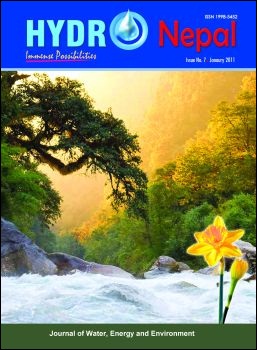Reduction of Microbial Contamination in Drinking Water using Flocculant Settling
DOI:
https://doi.org/10.3126/hn.v8i0.4909Keywords:
Water quality, Contamination, Pollutants, Coagulation, Coliform, Alum, PakistanAbstract
Pakistan is subjected to rapid water shortage due to different social and environmental problems. Moreover, the drinking water is being contaminated at an alarming rate that is mostly due to the discharge of untreated domestic and industrial effluent and agricultural run-off. Therefore, this study was designed to evaluate the water quality problems of the subject area and to determine a cost effective treatment technique. The main objective was to determine the removal efficiency of microbial contamination using flocculant settling. The main pollutants identified by conducting water quality tests are arsenic, fluoride, nitrates and microbial contamination. The maximum concentration of arsenic, fluoride, nitrates and microbial contamination were observed as 12ppb, 2.2mg/L, 26mg/L and 84 colonies/100mL, respectively. During discrete settling tests performed in a 12cft column, it was noticed that the removal of microbial contamination corresponding to a detention time of 225min is 26.7% only. While working on different coagulants, it was observed that the optimum alum, lime and magnesium dosage for the removal of microbial contamination is 31.5mg/L, 10.5mg/L and 27mg/L respectively. The final results of the study suggest that the use of lime as a coagulant to improve the quality of water in terms of microbial contamination is an effective and reliable technique, both in terms of its treatability performance and cost-effectiveness, which was noticed to be 77.7%.
DOI: http://dx.doi.org/10.3126/hn.v8i0.4909
Hydro Nepal: Journal of Water, Energy and Environment
Issue No. 8, 2011 January
Page: 34-37
Uploaded date: 17 June, 2011
Downloads
Downloads
Published
How to Cite
Issue
Section
License
The copyright of the articles and papers published is held by HYDRO Nepal Journal.
The views and interpretation in this journal are those of author(s), and HYDRO Nepal does not bear any responsibility for the views expressed by authors in the journal.




